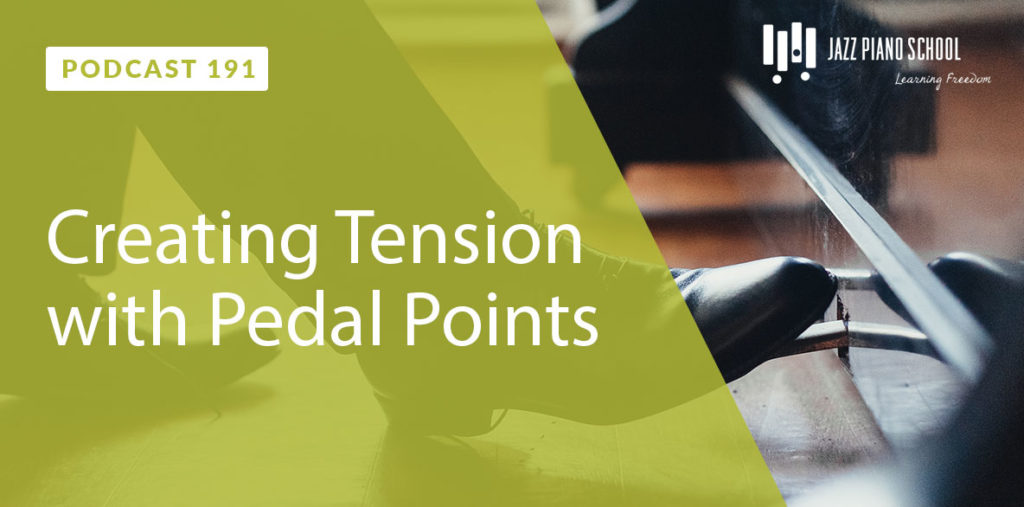How to Bring Out the Melody (Ep: 206)

In the classical piano world, it’s all about how you play the notes. Players like Bill Evans and Keith Jarrett applied classical voicing techniques to jazz piano to create beautiful sounding melodies. You can do the same with these exercises!
There are no practice materials for this week’s podcast. Leave us a comment or question in the section below!
Creating Tension with Pedal Points (Ep: 191)

A pedal point is when you keep the same note in the bass while changing the chords on top. Doing this for a series of measures creates a sense of both connection and tension. Using pedal points builds energy so that when the bass note finally changes, the harmonies of the tune seem to burst forth like a waterfall breaking through a dam. This lesson explores how to incorporate pedal points into your own playing.
Solo Piano Architecture (Ep:187)

When playing solo piano, it’s helpful to design the flow of an arrangement. With no constraints, playing solo can quickly become boring to both the player and the listener. By developing concepts to shape your arrangements, you will achieve a greater sense of freedom in your playing and have confidence in performance.
Learn The Versatile Crunch Chord and Its Many Applications (Ep:184)

Whenever we dedicate time to internalizing musical material, it is ideal to choose structures that are applicable to many common jazz situations. This lesson focuses on one such structure that I have affectionately labelled the crunch chord. There are two main reasons this voicing is so versatile. First, it contains 2 tritones, so it can be used on 4 different dominant chords. Second, it contains many different smaller chords within its overarching structure. The relationships between these chords within the voicing create a unique harmonic texture that is useful for harmonizing any melody of your choosing.



